Only 29% of functional leaders report they have all the talent they need to meet current performance requirements. How can you ensure you are attracting the right talent to your organisation?
Source: Gartner (May 2021)
Attraction is a crucial part of the talent lifecycle. Creating an attractive offer for candidates not only improves recruitment metrics, it can also lower attrition and increase efficiency throughout the business. Low attraction equates to a longer lead time to fill vacancies, more stress on internal teams, less time to upskill employees, a lack of resources, and a delay on major projects, all of which can cost the business both in monetary terms and in the attrition of current talent.
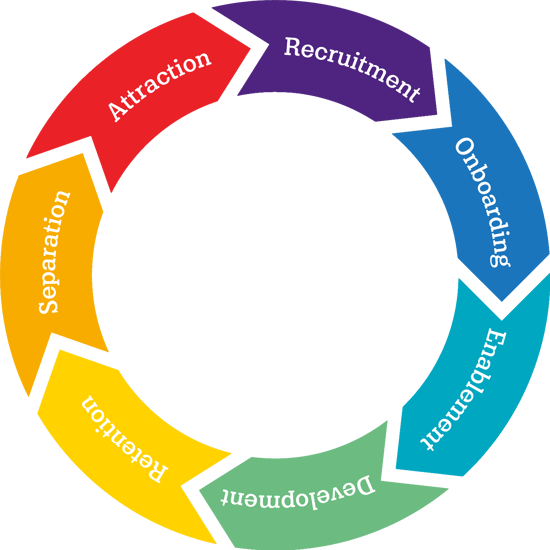
The ability to attract talent to fill skills gaps created by emerging technology, business growth and attrition is crucial to ongoing success. Great talent is scarce, and the higher skilled or experienced the role, the smaller the pool of suitable candidates. It is often said that people are a business's most valuable asset, and this is no glib statement. A study found that superior talent is up to 8 times more effective, and the more complex a role the wider the gap (source: McKinsey, 2012).
Businesses face tough competition for talent across all levels of recruitment. Even in today’s challenging economy, the job market maintains a high level of vacancies (source: ONS), which gives strong candidates their pick of opportunities. This competitive landscape, combined with a spike in attrition post-pandemic, means it is more important than ever for businesses to stand out with a competitive offer and vision that meets both current and prospective employees’ needs.
In what has been dubbed ‘The Great Resignation’ of 2021, 41% of employees reported considering leaving their current role, and of those leaving 36% planned to do so without another role in place (source: Harvard Business Review, Jan 2022). A further study from PwC surveying 52,000 workers in 2022 found that 1 in 5 workers were planning to leave their role within the year (source: PwC, May 2022), confirming this trend is far from over.
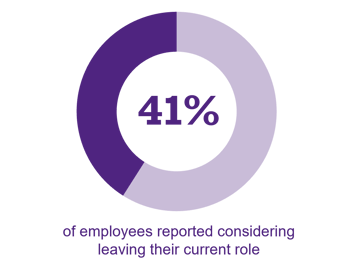
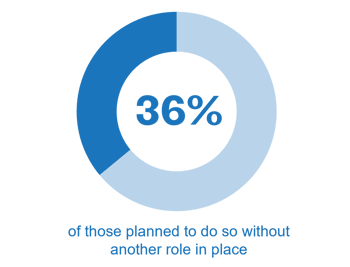
Candidates, and those reevaluating their current role, are now making decisions based on a broader range of factors than salary alone. Traditionally job security and salary have been the driving factors when making a career move, but there is now a shift towards a more holistic package that includes flexibility and career development alongside a sense of belonging and feeling valued by an organisation. In a recent study by Pew Research, the main reasons for leaving a role were cited as low pay, a lack of progression and feeling disrespected or undervalued in the workplace. These were closely followed by childcare issues and a lack of flexibility.
Investing time in crafting an attractive proposition for prospective candidates, will not only reap rewards in the talent you attract, it can also improve the satisfaction levels of your current employees and help you retain top performers. So how can you shape a compelling offer to attract the best talent for your business? Read on to find out.
The answer to low attraction is a clear Employee Value Proposition or EVP for short. A strong EVP ensures candidates know who you are, what you offer and why you’re different from the competition. It communicates how what you offer coincides with what prospective employees are looking for.
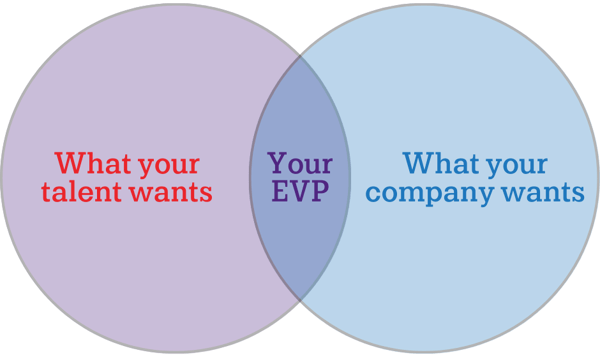
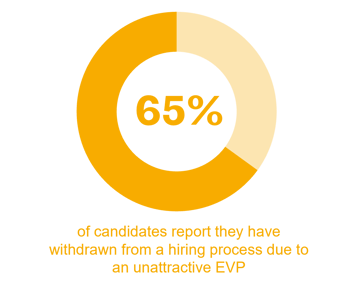
An effective EVP will not only help you to attract more talent, it will also ensure you attract the right talent by resonating with people who share your organisation’s ideals. A recent Gartner study highlights the positive impact a great EVP can have on retention and attraction: organisations that effectively deliver on their EVP can decrease annual employee turnover by just under 70% and increase new hire commitment by nearly 30%.
The importance of a strong EVP can’t be underestimated, the same study found that 65% of candidates report they have withdrawn from a hiring process due to an unattractive EVP.
When developing your EVP it’s important to be careful not to overpromise and underdeliver. Your EVP should always match the real employee experience.
Overplaying what the business can offer is likely to lead to new employees leaving during the onboarding phase, compounding recruitment costs and timelines. Savvy candidates are also expected to check the likes of Glassdoor and LinkedIn for an unfiltered view of the business.
Your EVP must be distinctive, specific and true to the lived experience to be truly effective.
Read on to discover the crucial components of a strong EVP.
Want to read this offline or share with a colleague? Simply fill in some details to download a copy.
There are many different approaches and models that can be used when creating an EVP. We have identified six key areas which reflect the holistic package candidates are searching for when evaluating a potential role, and incorporate what Gartner has badged as The Human Deal. This Human Deal includes a sense of shared purpose, feeling understood and cared for, radical flexibility, and opportunities for growth.
Each business will find its strength lies in a particular segment. It’s important to bear in mind the aim isn’t necessarily to stand-out across all elements, but to identify where your strengths and what prospective employees are looking for coincide so that you can appeal to them directly. Read on as we take a closer look at each of these six areas.
Employees want to work for organisations which align with their interests and values. They are looking for a sense of meaning and shared purpose in work that goes beyond profitability. They are also looking for companies that provide transparency on key issues.
A 2021 Gallup Poll found that employees across all generations are looking for ethical leadership from their employers. A PwC study of over 50,000 employees found that health and safety and social issues were the top priorities, followed by diversity and environmental issues. Organisations that are able to clearly communicate their ‘why’ beyond profit have an opportunity to rise above the competition.
What to consider:
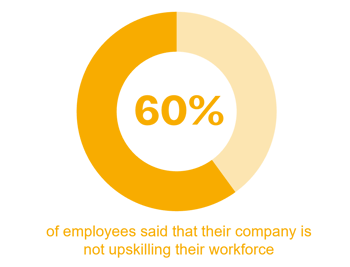
From the application process, through onboarding, to training and progression. Support throughout the career path is vitally important in attracting talent and minimising attrition. A lack of career development is one of the top reasons employees give for leaving a role.
Only 40% of employees said that their company is upskilling their workforce, and 39% of employees are concerned they are not getting enough training, especially when it comes to digital and new technologies (source: PwC).
Just as important as training is the enablement in terms of time, tools and ongoing coaching. As prospective employees search for what they feel is lacking in their current organisation there is an opportunity to attract talent by being explicit about what your company can offer.
What to consider:
Want to read this offline or share with a colleague? Simply fill in some details to download a copy.
The shift to remote working during the pandemic showcased a more flexible way of working that benefited many employees. As a result, candidates are placing more value on flexibility and hybrid working models when evaluating a new opportunity. Over 55% of employees say that whether they can work flexibly will impact whether they stay at their current organisation, and 75% say that their expectations for flexible work have increased post-pandemic (source: Gartner, June 2021). This flexibility not only benefits employees but has been shown to drive higher performance for organisations. Savvy organisations can benefit from this shift by offering more flexibility and, in doing so, take advantage of talent leaving employers which have a more rigid approach. Offering fully remote working also widens the talent available to you, removing geographical restrictions which may be making it difficult to recruit highly skilled roles.
What to consider:
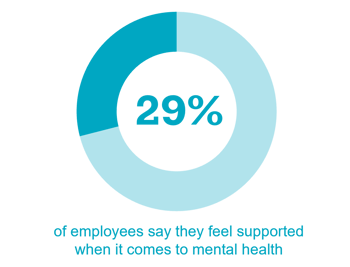
Whilst the draw of a competitive salary should not be underestimated, total package remuneration is more important than base salary. In addition to the basics of holiday allowance, pension and employee discounts there is now more focus than ever on healthcare and well-being initiatives.
Only 29% of employees say they feel supported when it comes to mental health (PwC), and mental health worries are almost on par with physical health (Bain). Businesses can offer real value to their employees by offering enhanced support as part of the benefits package.
Find more in-depth information in our Salary Benchmarking Guide and Workplace Wellbeing Guide.
What to consider:
A strong work culture and community can pay dividends in attracting and retaining talent. A recent McKinsey study showed that while employers are likely to focus on the transactional nature of work, employees put more value on the relational aspects. A focus on internal communication alongside offering positive work experiences and encouraging positive behaviours can help combat negativity in the workplace. There are many opportunities to do this through regular updates, ongoing engagement activities and small gestures of reward and recognition.
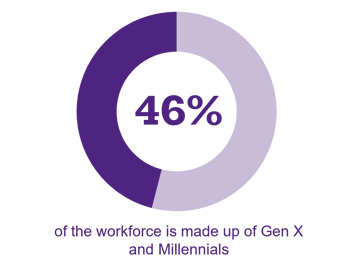 Company culture begins at the top and so it’s important the leadership team are seen as part of the overall community and is fully bought into its values. A study by MyPerfectResume found that poor leadership and a lack of communication were two of the top drivers in a negative work environment.
Company culture begins at the top and so it’s important the leadership team are seen as part of the overall community and is fully bought into its values. A study by MyPerfectResume found that poor leadership and a lack of communication were two of the top drivers in a negative work environment.
Diversity is also of great importance to Gen X and Millenials, who together make up 46% of the workforce. Ensuring you are supporting diversity in all its forms across your organisation and throughout the talent lifecycle is of critical importance. For more on this see our Diversity Guide.
What to consider:
The working environment can be a key factor in attracting talent. For those evaluating on-site roles, the location and transport connections can make or break an opportunity. Having the right tools on hand is also a key consideration for many, with the quality of technology and access to software a critical factor, particularly in the digital and creative sectors. Support and opportunities for connection for remote workers can be just as important as office facilities for on-site workers. While workplaces that require presence on-site will need to ensure their facilities are attractive to employees and candidates, this can include different types of office space from quiet spaces to breakout areas, to parking, and access to bike lock up and showers.
What to consider:
Now we understand the six core elements of a strong EVP, what are the steps to formulate the offer for your organisation.
Use the six elements as your framework and build out what it is your business offers employees in each area.
Find out what aspects of your offer are most attractive by running a survey to discover why they stay with the business and what they like most about what the business offers them. You can also use this as an opportunity to identify your weak spots by asking them about their dislikes or frustrations.
Pinpoint which companies you are competing with on a talent level and conduct research to understand their offer. This phase is essential in understanding your point of differentiation from the candidate's perspective.
Reflecting on the information you have gathered you should now be able to identify a key point of difference, something you offer that makes you stand out from other businesses and is attractive to prospective employees.
Create a document which outlines your EVP and make sure it resonates with your employees by presenting it to a small test group. Once you have a signed-off document it’s time to launch internally and ensure that your EVP is embedded in both external and internal materials. This may include induction materials, job adverts, content for recruitment events, and corporate channels including the about us and careers sections of the company website.
Your EVP will have an element of flex. Attracting talent for a specific role may require you to focus on a different part of your offer to attract candidates with specific requirements.
Your EVP requires regular monitoring to ensure it still meets the needs of prospective employees. As the economy changes and evolves, so will your competitor’s offer and your prospective employee's expectations.
Here at the Talent Insight Group, we believe in our services, and so we use our insights to inform our own business practices, as well as those of our clients.
What follows is an overview of the TIG Employee Value Proposition as it stands today.
We believe in growth through people. In recent decades we have seen a huge shift from an expectation of staying at one company for life, to the normality of moving from business to business in order to progress. We have seen first-hand how important it is to offer opportunities for learning and development to ensure we have the right mix of skills and link this to opportunities for progression within the business to attract and retain talent.
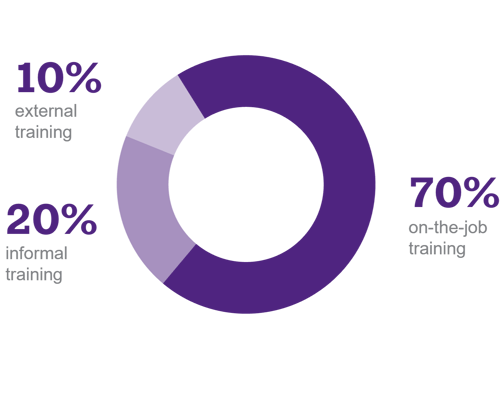 We offer a hybrid working model, with some roles fully remote, and trust our employees to flex their working hours as needed to cover personal appointments and errands. The combination of hybrid and fully remote working means it's more important than ever to offer opportunities for connection for our team, whether that is through in-person events or the weekly virtual coffee break we schedule (no project chat allowed!).
We offer a hybrid working model, with some roles fully remote, and trust our employees to flex their working hours as needed to cover personal appointments and errands. The combination of hybrid and fully remote working means it's more important than ever to offer opportunities for connection for our team, whether that is through in-person events or the weekly virtual coffee break we schedule (no project chat allowed!).
We have an early finish on Fridays, which we are looking to take earlier. This facilitates a better work-life balance for our team and offers more time for professional development. Well-being is incredibly important to us so we offer access to life coaching and counselling sessions alongside a competitive salary.
We’re proud to offer excellent office facilities on the outskirts of Newcastle Upon Tyne within easy reach of transport connections. Our facilities include a variety of workspaces, break-out areas and access to showers and bike lock-up to facilitate an active commute.
Want to read this offline or share with a colleague? Simply fill in some details to download a copy.
The Employee Value Proposition has a huge impact across the full talent lifecycle, helping to reduce attrition as well as attracting new talent. An attractive EVP also have the benefit of driving down the costs associated with recruitment and retention. However, this is not an easy tick-box exercise. To be successful businesses must invest time in the process to develop a truly attractive offer which stacks up against the competition.
This process includes:
The EVP model can be used to get a competitive advantage in the pursuit of talent. But you should also be aware that your competitors are already looking at you, so if you’re not doing this work you’re falling behind.
If you’d like to raise your profile within your organisation and get your voice heard, we can help you to get the right insights to have those conversations. Our talent intelligence service not only gives you access to data but also insights to guide how your organisation could respond.
We can uncover a wealth of information and help guide your organisation through the journey to develop a strong EVP:
We work in partnership with our clients to ensure that we uncover the insights you need but our extensive experience means we can also guide you about the key metrics that will have an impact internally. We use a mix of primary and secondary data to ensure the insights we provide are robust and reliable.
If you’d like to find out how we’re helping our clients in this area get in touch here or email hello@talentinsightgroup.co.uk for a no-obligation conversation.
© Talent Insight Group 2025